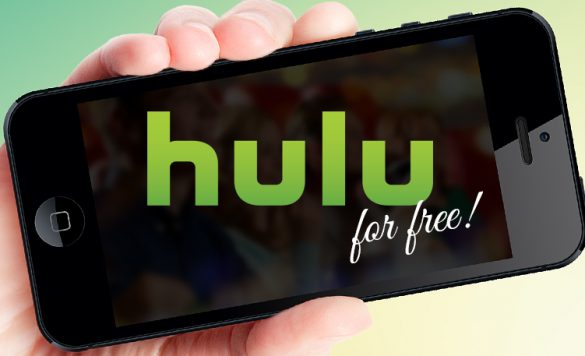10 Steps How to Write a Freelance Proposal
Updated on: by Amy Kennedy
Are you a freelancer looking to secure more clients and projects?
Need Easy Extra $350+/Month For Free?
- SwagBucks: Watch videos, take surveys, shop and more to earn real money. Earn up to $35 per survey! No hidden fees and completely free. Join Swagbucks Now to Get $5 Free
- InboxDollars: Has so far paid its members over $40 Million. Watch videos, take surveys, shop and more. Join InboxDollars Now and Get Free $5
- SurveyJunkie: Make $5-$25 in your spare time from home to take online surveys, participating in a Focus Groups and trying new products. Join SurveyJunkie Now
- Branded Surveys: Complete online surveys. Collect points. Redeem your points for cash & gift cards. No hidden fees and completely free! Has so far paid its members over $18 Million. Join Branded Surveys Now
Crafting a compelling freelance proposal is a crucial skill in today’s competitive marketplace.
Your proposal serves as the first impression potential clients have of you and your services.
It’s your opportunity to showcase your expertise, highlight your unique approach, and convince clients that you’re the perfect fit for their project.
This blog post will guide you through the various steps to write a freelance proposal that stands out from the crowd and increases your chances of winning the projects you desire.
The Importance of Personalizing Your Freelance Proposals
As a freelancer, crafting a well-structured and personalized proposal is one of the key factors that can significantly impact your success in winning new clients and projects.
Clients receive numerous proposals from different freelancers for their projects, and a generic, one-size-fits-all approach is unlikely to make a lasting impression.
To stand out from the competition and showcase your professionalism, it’s essential to personalize your freelance proposals.
1. Building a Connection with the Client
Personalization allows you to establish a connection with the client right from the start.
Addressing the client by their name and acknowledging their specific project requirements demonstrates that you’ve taken the time to understand their needs.
Clients are more likely to engage with a freelancer who shows genuine interest in their project and values their unique objectives.
2. Tailoring Your Skills and Expertise
Every client and project is different, and your freelance proposal should reflect this understanding.
By tailoring your skills and expertise to match the client’s requirements, you demonstrate how your unique abilities align perfectly with what they’re looking for.
This personal touch instills confidence in the client that you’re the right person for the job.
3. Researching the Client and Project
Before submitting a proposal, take the time to research the client’s business, industry, and any specific challenges they might be facing.
This research enables you to speak directly to their pain points and offer valuable insights in your proposal.
Need Easy Extra Cash?
Pinecone Research, a leading name in online survey panel honesty, absolutely guarantees $3 cash for every survey you complete!
Take advantage of their time limited New Membership drive and register NOW. Join today: 100% free!
Join Pinecone Research Now
By showcasing your knowledge of their niche, you position yourself as an expert who can provide tailored solutions.
4. Addressing Client Goals and Objectives
A personalized proposal should focus on the client’s goals and objectives rather than solely on your own achievements.
Clearly outline how you intend to help the client achieve their desired outcomes and describe the benefits they will gain from working with you.
This client-centric approach emphasizes that you prioritize their success above all else.
5. Avoiding Generic Templates
While using proposal templates can be a time-saver, it’s essential to customize them for each client.
Avoid using generic templates that lack specifics about the project at hand.
Clients can quickly spot copy-paste proposals, which may convey a lack of effort and interest in their unique needs.
6. Demonstrating Attention to Detail
Personalized proposals showcase your attention to detail and commitment to excellence.
Small touches like referencing specific aspects of the client’s website or recent projects they’ve undertaken demonstrate that you’ve done your homework and are genuinely invested in working with them.
7. Building Trust and Credibility
Clients want to work with freelancers they can trust.
Personalization in your proposals helps build that trust.
When clients see that you’ve taken the time to understand their business and requirements, they’re more likely to perceive you as a reliable professional worth collaborating with.
8. Avoiding Miscommunications
A generic proposal runs the risk of misinterpreting the client’s needs or missing crucial details.
A personalized approach minimizes the chances of misunderstandings and ensures that you and the client are on the same page right from the outset.
9. Enhancing Client Experience
Personalized proposals contribute to an overall positive client experience.
They show that you value client relationships and are committed to delivering tailored solutions that meet their expectations.
Happy clients are more likely to become repeat customers and recommend you to others.
10. Continued Personalization in Communication
Personalization shouldn’t stop with the proposal; it should carry through to your communication with the client.
Address their specific questions, concerns, and feedback in subsequent interactions, reinforcing the sense that they’re working with someone who genuinely cares about their project.
Steps on How to Write a Freelance Proposal
Here are the steps on how to write a freelance proposal. They will guide you through your proposal creation journey to ensure you land those gigs you apply for!
1. Understand the Client’s Requirements
To write a persuasive freelance proposal, it’s crucial to thoroughly comprehend the client’s specific requirements for the project.
Take the time to review the project brief, ask clarifying questions, and gain a clear understanding of their objectives.
Understanding their needs allows you to tailor your proposal to provide specific solutions that address their challenges and goals.
This demonstrates your attentiveness and positions you as a valuable partner.
By understanding the client’s requirements, you can craft a proposal that resonates with them and increases your chances of winning the project.
2. Research the Client and Industry
Conducting thorough research on the client’s business and industry is vital for a compelling freelance proposal.
Familiarize yourself with their brand, target audience, competitors, and industry trends.
This knowledge helps you align your proposal with their business goals and present yourself as a knowledgeable professional.
By demonstrating your understanding of their industry, you build credibility and trust with the client.
Earn Everything… nearly!
Join Opinion Outpost, one of the few faithful and honest survey panels and earn cash and gift cards for your opinion. Stack your points and redeem them: Simple! No hidden fees and completely free!
Join Opinion Outpost Now
Researching the client and industry enables you to create a proposal that stands out and showcases your expertise in addressing their specific needs.
3. Address the Client by Name
Adding a personal touch to your freelance proposal is impactful.
Address the client by their name throughout the proposal.
This simple act shows respect and demonstrates that you’ve taken the time to know who they are.
Personalization establishes a connection, making the client feel valued and engaged.
It also conveys professionalism and attention to detail, increasing the likelihood of the client considering your proposal seriously.
4. Start with an Attention-Grabbing Introduction
The introduction of your freelance proposal is your opportunity to capture the client’s attention.
Craft an opening that immediately engages them and showcases your understanding of their project.
Clearly state your excitement for the opportunity and convey how you can meet their specific needs.
A compelling introduction sets the tone for the entire proposal, encouraging the client to continue reading and invest in your proposal.
By starting strong, you establish credibility and demonstrate your ability to communicate effectively, increasing the likelihood of the client being receptive to your proposal.
5. Showcase Your Expertise and Relevant Experience
Your freelance proposal is the perfect platform to showcase your skills and expertise.
Highlight relevant experiences and achievements that align with the client’s project requirements.
By showcasing your expertise, you establish yourself as a qualified professional who can deliver results.
Provide examples of past work that demonstrate your capabilities and directly relate to the client’s needs.
This evidence of your proficiency and track record not only builds trust but also differentiates you from competitors.
Presenting your expertise effectively enhances your chances of securing the project.
6. Propose a Tailored Solution
A personalized approach in your freelance proposal is key to success.
Tailor your proposal to the client’s unique requirements and challenges.
Clearly outline how your services will address their specific needs and provide a solution that meets their goals.
By customizing your proposal, you demonstrate that you’ve thoroughly considered their situation and have a deep understanding of their pain points.
Offering a tailored solution shows your commitment to delivering value and increases the client’s confidence in your ability to provide the outcomes they seek.
7. Outline the Project Scope and Deliverables
In your freelance proposal, it is crucial to define the project scope and clearly outline the deliverables.
Provide a detailed description of what the client can expect from your services, specifying the specific tasks and outcomes.
A well-defined project scope manages expectations and ensures both parties are aligned on what will be delivered.
By outlining the scope, you create a solid foundation for project success, minimizing misunderstandings and setting clear boundaries.
8. Provide a Clear Timeline and Milestones
Transparency and clarity in project timelines are essential in your freelance proposal.
Include a detailed timeline with key milestones and deadlines.
This information allows the client to understand the project’s progress and sets expectations for timely completion.
A clear schedule showcases your organization and commitment to meeting deadlines, fostering trust and confidence.
By providing a clear timeline, you establish a sense of professionalism and reliability, positioning yourself as a freelancer who values efficiency and respects the client’s time.
9. Present Your Pricing and Payment Terms
Transparency in pricing and payment terms is crucial in a freelance proposal.
Clearly state your rates, payment methods, and any relevant terms or conditions.
Being transparent about financial aspects builds trust with the client and demonstrates your professionalism.
It ensures that both parties are on the same page regarding the financial aspects of the project.
By presenting your pricing and payment terms clearly, you eliminate potential misunderstandings and create a foundation for a smooth working relationship.
10. Include a Call-to-Action and Contact Information
End your freelance proposal with a strong call-to-action (CTA) that encourages the client to take the next steps.
Prompt them to schedule a meeting, discuss the proposal further, or accept your offer.
Additionally, ensure your contact information is easily accessible.
Include your email address, phone number, and any other relevant contact details.
By providing a clear CTA and contact information, you facilitate direct communication and make it convenient for the client to reach out to you.
This enhances the client’s experience and increases the likelihood of positive engagement.
How to Effectively Communicate with Clients Throughout a Project
Clear and effective communication is the cornerstone of successful freelance projects.
Maintaining open lines of communication with your clients helps build trust, manage expectations, and ensure that the project progresses smoothly.
Let’s explore some essential strategies to effectively communicate with clients throughout a project.
1. Set Communication Expectations from the Start
From the outset, establish clear communication expectations with your clients.
Discuss preferred communication channels, such as email, phone calls, or project management tools.
Ensuring mutual understanding of how and when to communicate fosters a productive working relationship.
2. Active Listening and Understanding Client Needs
Actively listen to your clients to understand their project requirements fully.
Pay attention to their feedback, concerns, and objectives.
By demonstrating that you comprehend their needs, you can tailor your approach and deliverables more effectively.
3. Regular Project Updates
Provide regular updates on the project’s progress, milestones achieved, and any potential challenges.
Keeping your clients informed reduces uncertainty and gives them confidence that the project is on track.
4. Be Proactive in Sharing Progress
Don’t wait for clients to request updates.
Be proactive and share progress reports even if they haven’t asked for them.
This shows your commitment to the project and your desire to keep them informed.
5. Use Clear and Concise Communication
Avoid jargon and technical language that may confuse the client.
Use clear and straightforward language to convey your messages effectively.
Break down complex concepts into easily understandable terms.
6. Address Client Concerns Promptly
If a client raises concerns or questions, address them promptly.
Responding in a timely manner demonstrates your professionalism and dedication to resolving any issues that arise.
Effective communication is vital for successful freelance projects.
By setting clear expectations, actively listening to your clients, providing regular updates, proactively sharing progress, using clear and concise language, and addressing concerns promptly, you create an environment of trust and collaboration.
Strategies for Building and Growing Your Freelance Business
Building and growing a successful freelance business requires a combination of skills, determination, and effective strategies.
As a freelancer, you are not just providing services; you are also an entrepreneur responsible for managing your brand, attracting clients, and ensuring long-term success.
Let’s explore some essential strategies to help you build and grow your freelance business.
1. Define Your Niche and Target Audience
Identifying your niche and target audience is fundamental to building a strong foundation for your freelance business.
Determine the specific services or expertise you excel in and the industries or clients you wish to serve.
By focusing on a niche, you position yourself as an expert in that area, making it easier to attract clients who need your specialized skills.
Research your target audience’s needs, pain points, and preferences to tailor your marketing efforts and service offerings accordingly.
2. Create a Professional Brand Identity
Crafting a professional brand identity is crucial for establishing credibility and attracting clients.
Develop a strong brand name, logo, and tagline that align with your services and target audience.
Consistently use your brand elements across all communication channels, including your website, social media profiles, and business cards.
A cohesive and visually appealing brand identity leaves a lasting impression on potential clients and sets you apart from competitors.
3. Build an Impressive Portfolio
A well-curated portfolio is your showcase of skills and past work.
Highlight your best projects that demonstrate your expertise and ability to deliver results.
Include case studies or client testimonials that illustrate the value you brought to their businesses.
Your portfolio serves as evidence of your capabilities and provides potential clients with the confidence to hire you.
Keep your portfolio updated regularly as you complete new projects or gain more experience.
4. Market Yourself Effectively
As a freelancer, you are your own marketer. Use various marketing strategies to increase your visibility and attract clients.
Utilize social media platforms like LinkedIn, Twitter, and Instagram to share valuable content, engage with your audience, and showcase your expertise.
Create a blog where you can publish articles related to your niche and demonstrate your knowledge.
Networking is also essential; attend industry events, join online communities, and collaborate with other freelancers to expand your reach and gain referrals.
5. Provide Exceptional Customer Service
Outstanding customer service is vital for building strong client relationships and fostering repeat business.
Be responsive to client inquiries and maintain clear lines of communication throughout a project.
Address any concerns promptly and go the extra mile to exceed client expectations.
Happy clients are more likely to refer you to others and provide positive reviews, which can significantly impact your freelance business’s growth.
6. Diversify Your Income Streams
Relying on a single source of income can be risky for freelancers. Explore opportunities to diversify your income streams.
In addition to your core freelance services, consider offering related products, such as e-books, online courses, or digital templates.
You can also explore affiliate marketing, where you promote products or services relevant to your niche and earn commissions on sales generated through your referral links.
Wrap Up
In conclusion, crafting a compelling freelance proposal is a crucial skill that can significantly impact your success in winning new clients and projects.
By personalizing your proposals, you establish a connection with the client and showcase your professionalism.
Understanding the client’s requirements, researching their business and industry, and addressing them by name are key steps to create an engaging proposal.
By applying these strategies and approaches, you can stand out in the competitive marketplace, win the projects you desire, and create a fulfilling and prosperous freelance career
Related Posts:
- Your Freelance Writing Client is Not Obligated to Please You
- How To Write Faster Than Ever Before in 6 Easy Steps
- 7 Steps to a Freelance Career
- How to Start an Online Freelance Writing Career
- 11 Steps to Dealing with a Freelance Client that Won’t Pay
Earn Everything… nearly!
Join Ipsos iSay, one of the few Faithful and Honest survey panels and earn prizes, gift cards and donations. Stack your points and redeem them: Simple! No hidden fees and completely free!























Comments
Click here to post a comment...
Post comment